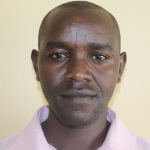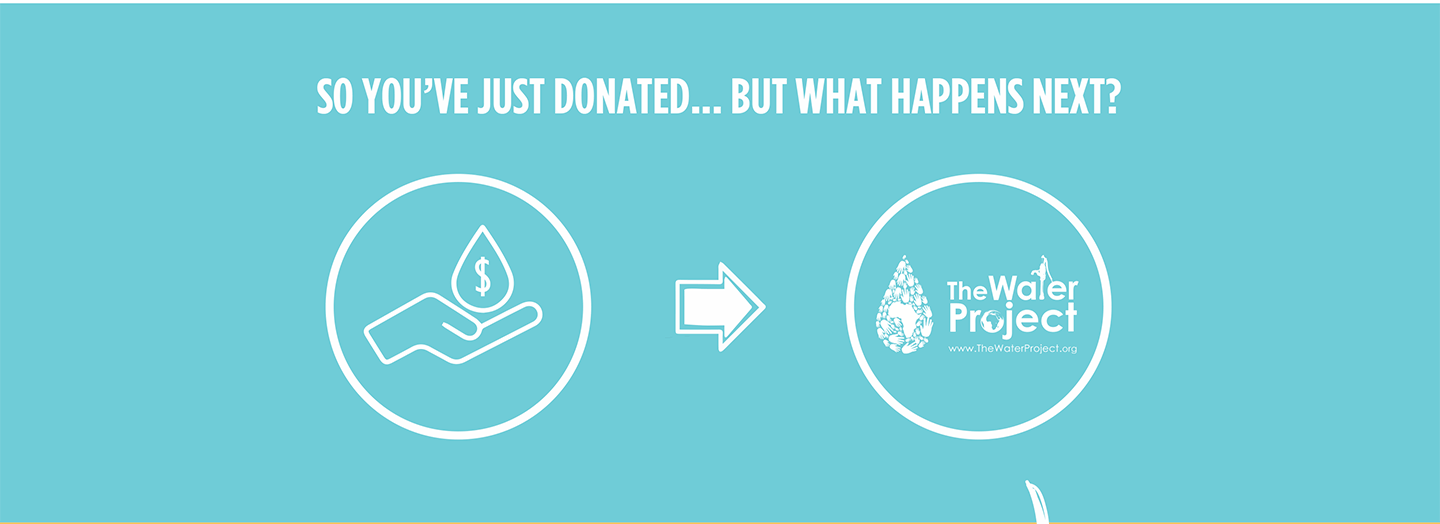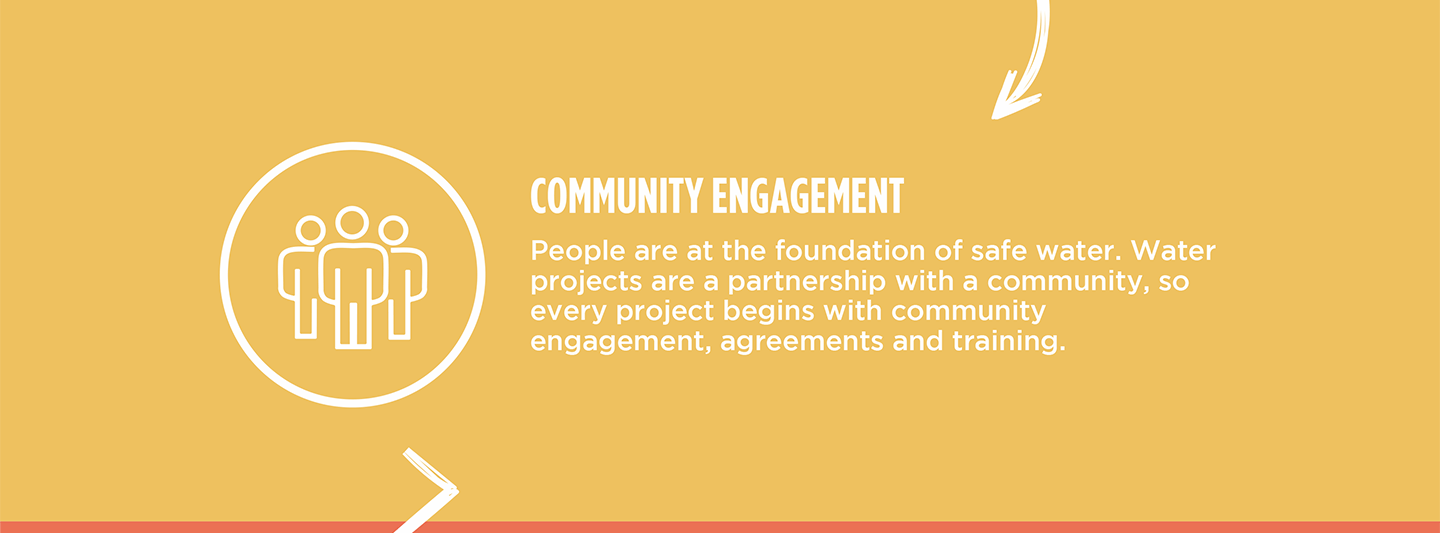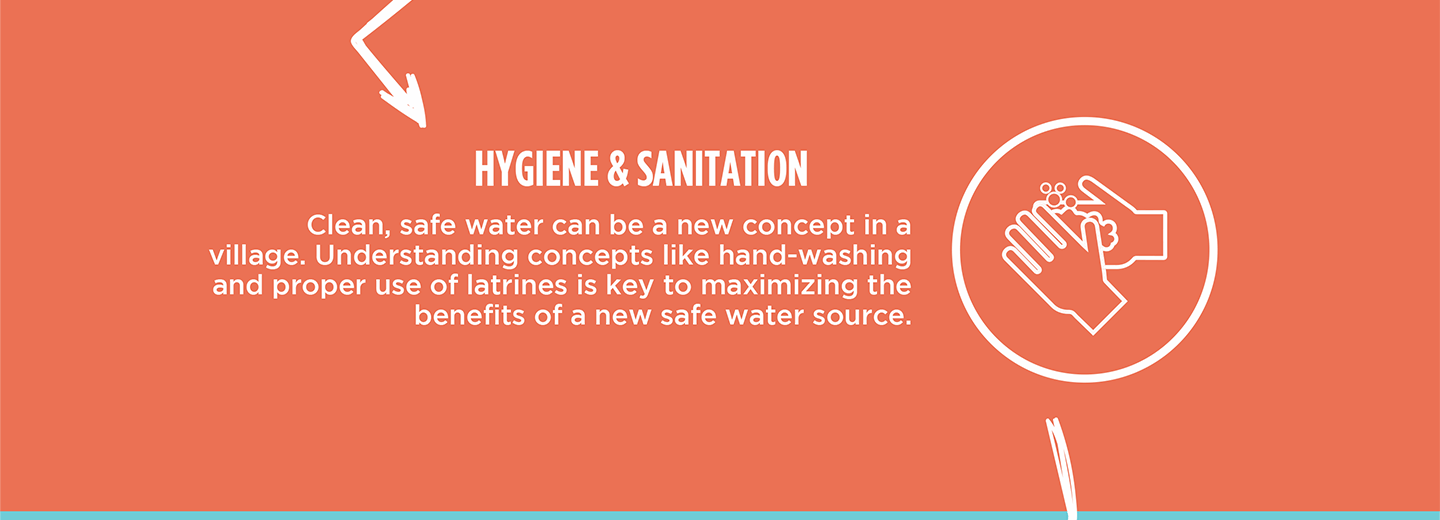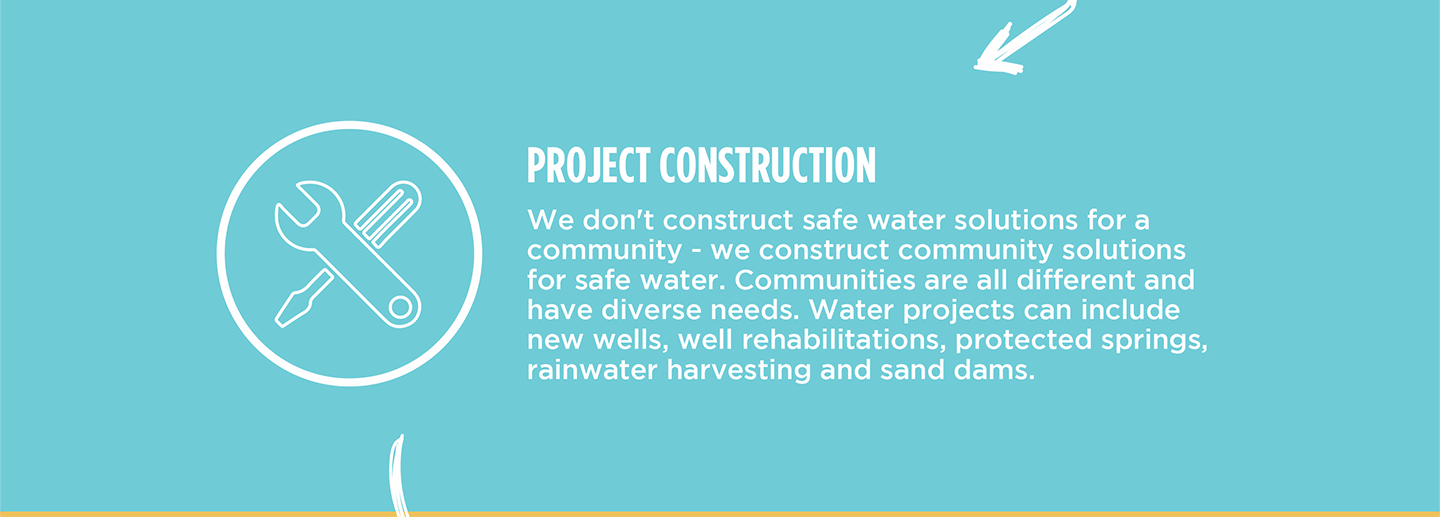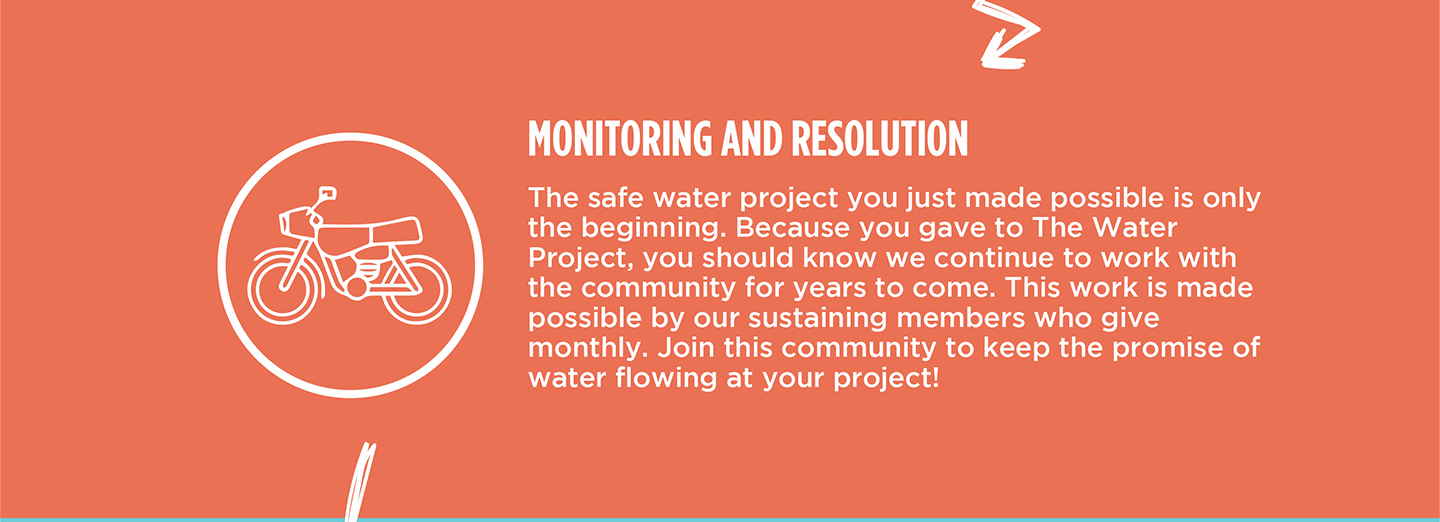May, 2025: Musiri Community Spring Protection Complete!
Your contribution has made access to clean water for the Musiri Community possible!
We transformed their spring into a flowing source of naturally filtered water. A chlorine dispenser was installed to provide added protection, and we trained the community on improved sanitation and hygiene practices. Together, these components will unlock the opportunity for community members to thrive!

We caught up with the interviewees from the beginning of this project. Hezron Oriro and Abigail are excited about the spring's protection!
"With clean, safe water, from now going forward, I will be free from restlessness thinking of how our water is going to be secured. This is just enough for me to have peace of mind at my age," shared 81-year-old Hezron Oriro.

Hezron Oriro in the newly protected spring.
"Access to water will help me evaluate and decide on the best for my future, and also revive dreams that have been stuck for a long time due to struggles with access to safe, clean water. This is an opportunity for me to come up with a new idea like beekeeping near the spring because there is a small plantation of trees, or even doing a group fish farming, so as to help generate income to boost our lives and also the sustainability of the spring," he concluded.
Children were just as excited as adults about clean water access!

Abigail (left) and her friend splashing clean water!
10-year-old Abigail shared, "I have never seen such a spring like this in my life. I will be fetching water full of joy in my heart every day, knowing that water will be flowing endlessly. With reliable water, I will be able to drink clean, safe water and grow healthy and strong."
Preparing for Spring Protection
Community members worked together to source all locally available construction materials for the spring. These included bricks, sand, stones, and fencing poles. Because people have to carry most items by hand, the material-collection process can take anywhere from a few weeks to months.

Community members gathering materials to prepare for the spring protection.
When the community was ready, we delivered the remaining construction materials, including cement, plastic tarps, and hardware. Then, our construction artisan and field officers deployed to the spring to begin work.
Protecting the Spring: A Step-by-Step Process
First, we excavated the spring area. This includes digging a drainage channel below the spring and several runoff diversion channels above and around the spring to help divert surface contaminants away.

To ensure community members could still access water throughout the construction process, we also dug temporary channels around the construction site to allow water to continue to flow. Excavation created space for setting the spring's foundation.

After establishing the base, made of thick plastic, wire, concrete and waterproof cement, we started brickwork to build the spring walls and stairs. Once the walls were tall enough, we began one of the most crucial steps: setting the discharge pipe. The discharge pipe needs to be positioned low enough so the water level never rises above the spring's eye, yet high enough to allow room for the average collection container (20-liters) to sit beneath the pipe without making contact, to prevent cross-contamination.

If we place the pipe too high, back pressure could force water to emerge elsewhere. Too low, and community members would not be able to access the water easily.
In coordination with the walls and stairs, we cemented stones on both sides of the spring's drainage channel. These stones discourage people and animals from standing in that area, which could cause soil erosion and a clogged drainage area.

We then cemented and plastered the spring walls. These finishing layers reinforce the brickwork and prevent water in the reservoir from seeping through. In turn, enough pressure builds to push water out through the discharge pipe.

Plastering the spring walls.
As the walls cured, we finished the stairs and installed tiles beneath the discharge pipe. The tiles protect the concrete from the falling water's erosive force.

We redirected the temporary diversion channels back into the reservoir box and closed all other exits to force water through only the discharge pipe. We filled the reservoir area with the large, clean stones arranging them in layers like a well-fitting puzzle. We covered the rocks with thick plastic and piled enough dirt on top to compensate for future settling.

Community members transplanted grass to help prevent erosion, and the collection area was fenced. The fence prevents people or animals from walking in the area above the spring, as compaction of this area can potentially compromise water quality.

Grass planting and soil covering.
The construction process took about two weeks of work and patience. As soon as the spring was ready, people got the okay from their local field officers to fetch water.

We officially gave ownership of the waterpoint to the Musiri Community.
Happiness and thanksgiving flowed in all directions!
Training on Health, Hygiene, and More
Together with the community, we found their preferred date for training. When the day arrived, facilitators Gladys Chepkorir and Wilson Kipchoge deployed to the site to lead the event. 23 people attended the training, including 16 women and 7 men.

We discussed personal, oral, and environmental hygiene, emphasizing proper water handling, soap-making, and the ten steps of handwashing. We also highlighted the importance of primary health care and covered the operation and maintenance of the water point, as well as leadership and governance. By the end of the training, each participant had a clear understanding of their role in maintaining clean water and promoting good health within their community.

The elected water user committee.
We held an election for the newly formed water user committee who will oversee the maintenance of the spring. We brainstormed income-generating activities and encouraged them to start a group savings account for future minor repairs to the spring.

Handwash training.
Field Officer Wilson Kipchoge described the event. He said, "The training was conducted successfully with all invited participants attending. Attendance surpassed our expectations because the number of female participants was double the [number of] male gender. This provided an avenue for the female gender to have more representation at the Water User Committee that was selected later. The training was attended by two special guests from the Ministry of Health, who took their time to interact with community members and, in turn, helped many of them to register into a new government medical scheme called Social Health Care. This was a blessing to many who could not afford to travel far distances to enroll for the scheme or otherwise would not register at all."
78-year-old farmer Francis Keya participated in the training event and felt deeply impacted by what he learned. Mr. Keya was once wary about chlorinating water, thus consuming potentially dangerous water. After learning how crucial chlorinating water from the spring is to ensure continued clean water, he is going to treat his water and stay healthy!

Mr. Keya.
"I have been very observant and witnessing everything that is taking place here. My very interesting topic covered was leadership and governance. This topic caught my attention in that leaders chosen during the training displayed their qualities through actions, which confirmed that leaders are not known just by names but must prove leadership by action. I have learned that leaders play [a] critical role in ensuring that a project is always functioning and well maintained," Mr. Keya continued.
Thank you for making all of this possible!





 Protected Spring
Protected Spring
 Rehabilitation Project
Rehabilitation Project











